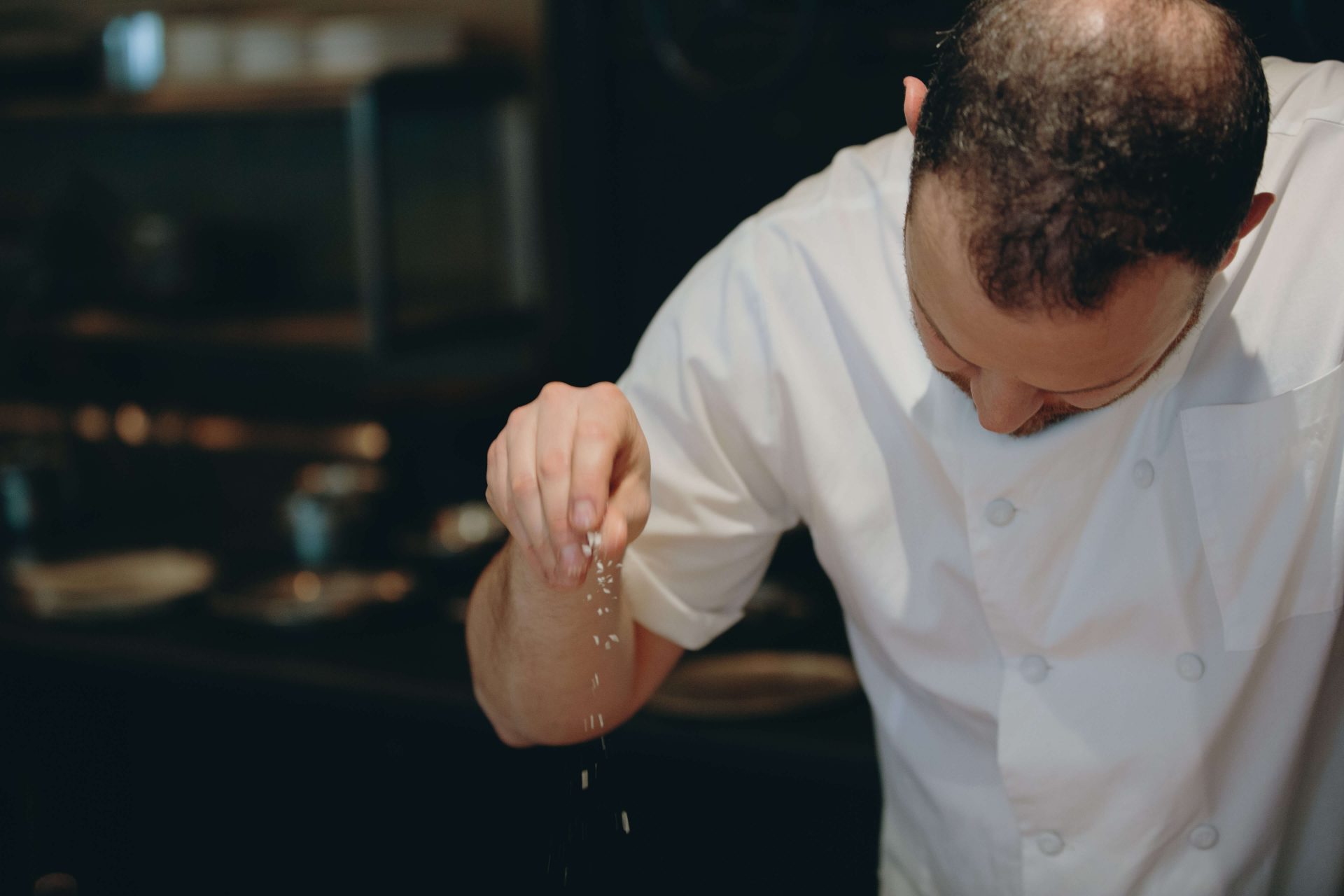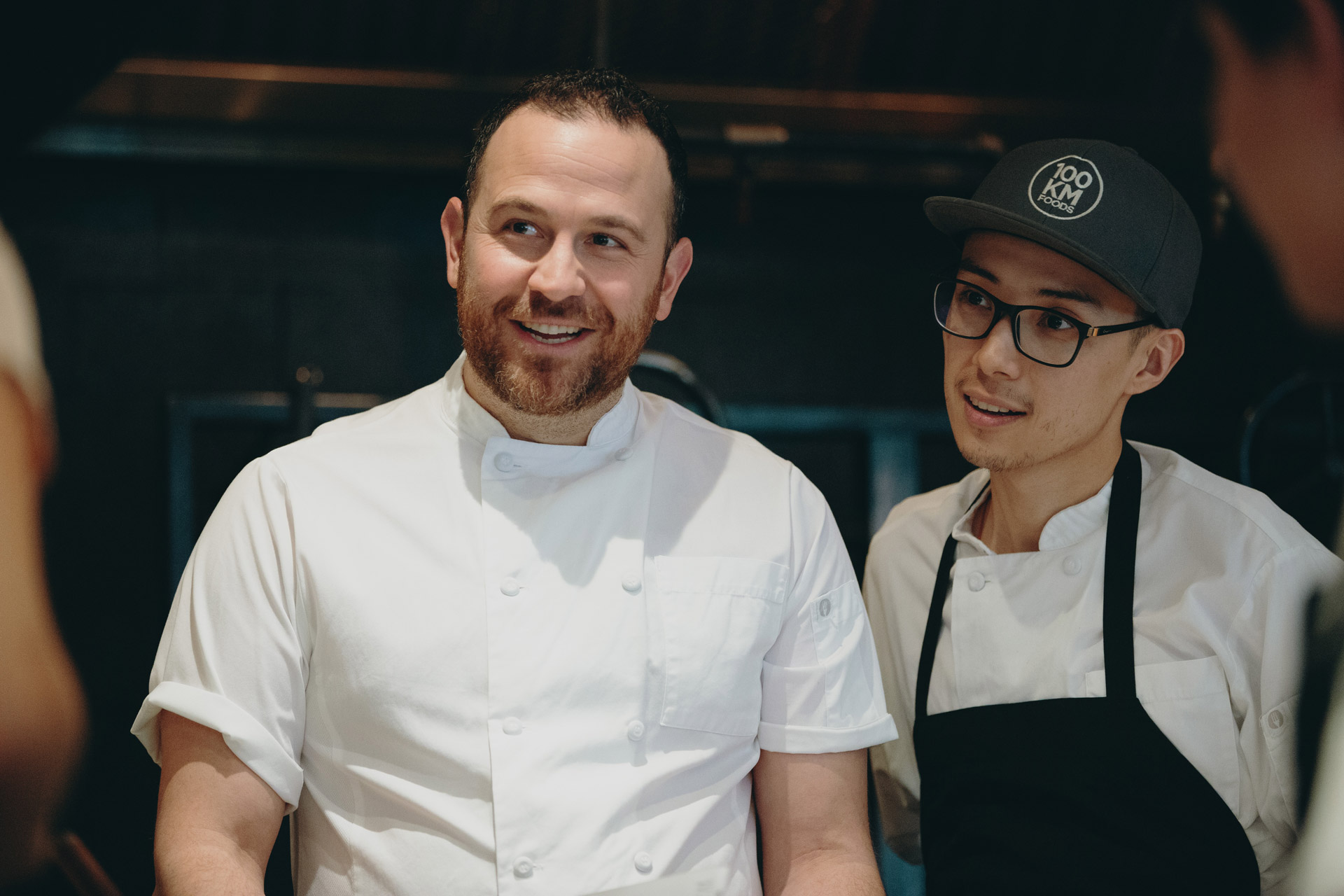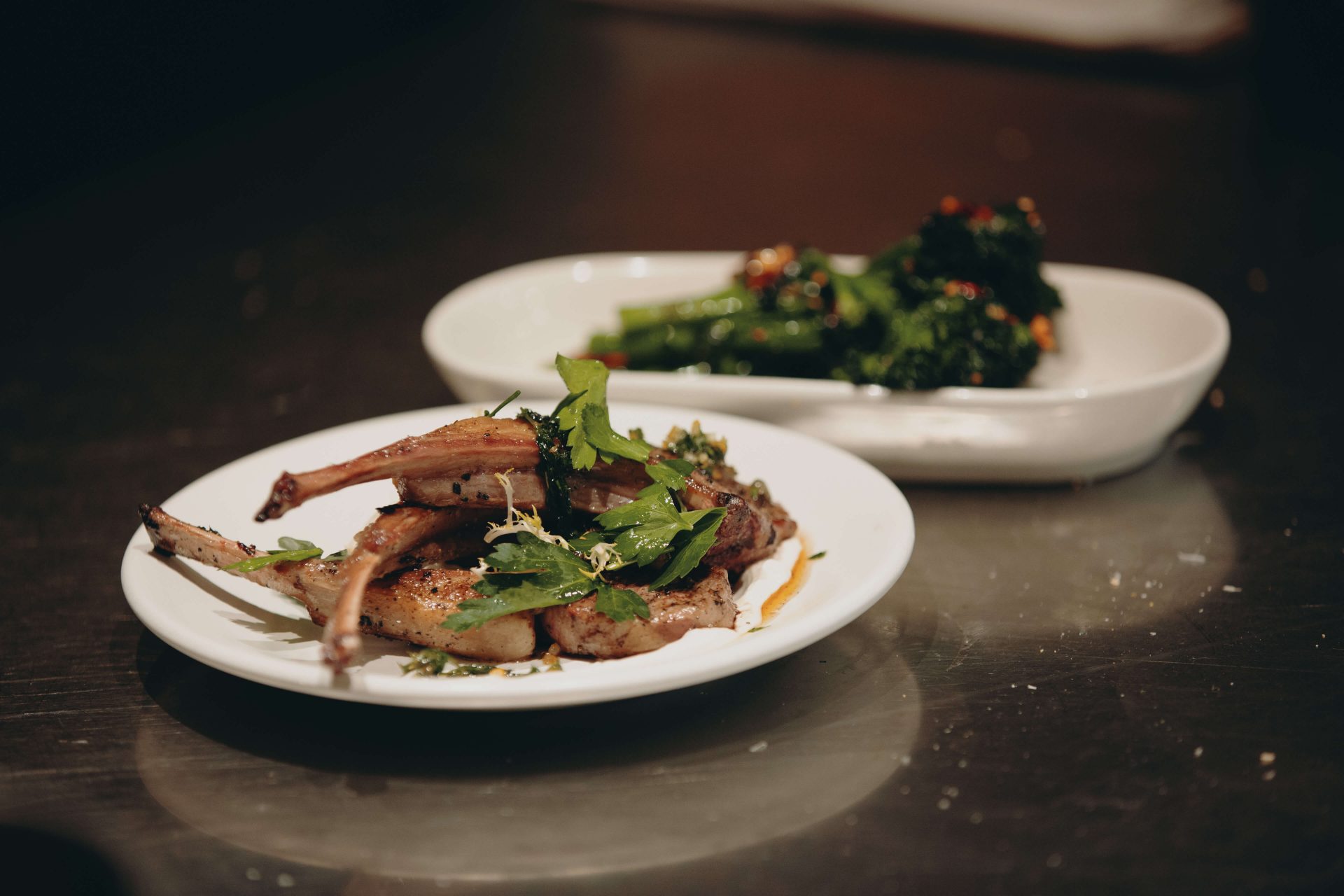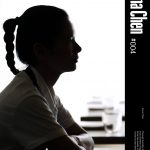Craig Harding
Making it in the restaurant game takes much more than great food.
On the day we were scheduled to interview Craig, a major inconvenience struck. He changed the location of the meet from Campagnolo to La Palma. Unfortunately for us, that meant trudging the full 20 metres from one of his acclaimed restaurants, across the road, to another acclaimed restaurant. Life can be cruel. But inconvenience aside, his ability to swap freely between hugely successful eateries offered a pretty good insight into Craig before we had even met – here was an immensely talented chef who was also one of the rare few to make it as a restaurateur.
In speaking to him, we wanted to get a better understanding of the business of running a restaurant. Being one of Toronto’s top chefs is one thing, but what is the key to successfully opening and operating multiple hit restaurants? For Craig, creating a holistic dining experience is critical. He looks beyond the cooking, into how to marry exceptional food with a carefully considered, beautiful environment. It is about designing a restaurant that carries the same purpose and the same goal throughout every component – from the food on your plate, to the art on the walls.
But before he began opening his own restaurants, Craig’s journey all began with a love of food. Being half Italian, it was almost inevitable that he would grow up with an intimate connection to eating. He recalled the influence that his grandmother had on him at an early age, rolling pasta together and learning how to make good, simple dishes from scratch. Friends and family would come together and make a ceremony of eating and sharing homemade creations. So from his earliest memories, he was set on the path of food. “It gave me the appreciation of getting food from one place to another, and eventually to your plate. To understand that process left an impact on me for sure.”
This food education is also part of what Craig now thinks makes up Canadian cuisine. “Canadian cuisine should be representative of the people who exist in the country and reflect their background…My Canadian cuisine is what my parents grew up eating and passed on to me.”
So with food already playing a pivotal role in his early life, his passion for cooking was then ignited in high school. He took a class with a European-trained chef, who began to show him the ropes. The teacher could see that Craig had a genuine interest in cooking, rather than just doing this for school credits. This exposure pushed him toward his first job working at Il Fornello, and his early experiences set his sights on a career in food: “that taste of restaurant life, coupled with the teacher I had in high school…that set me off. I fell in love.”
With the love affair underway, Craig completed culinary school and went on to stage with Jamie Kennedy, as well as working with Oliver Bonacini and Anthony Walsh. After a blazing start to a life in the kitchen, adding these big names onto his resumé throughout his first 10 years, he took a break from Toronto. First travelling to Australia and then heading to Victoria in British Columbia, this time away gave him a bit of space to think. “It was a combination between skiing and cooking. I cleared my head and it gave me the clarity to come back and open Campagnolo in 2010.”
Fast-forward to today, with 20 years of experience behind him, Craig is almost making an art form of creating successful restaurants, with Campagnolo, La Palma, and Constantine already under his belt. But despite his impressive cooking career, there is more to his accomplishments than food. Craig’s lineup of hit eating establishments would not be possible without the formidable partnership that he has with his wife, Alexandra Hutchinson. As a team comprising a chef and an interior designer, their unique combination of professions leaves them well-suited for the restaurant business.
In describing their collaboration, we were struck by how organic their working relationship seems to be. Sometimes they exchange ideas over casual conversation, sometimes they have more formal meetings, other times they argue. In fact, their idea for La Palma just came to them when they were sharing a glass of wine on their porch one summer evening. Which ever way they share their inspirations, they then go away and do their own thing, and touch base again at a later time. “You need to let these ideas bubble and blossom. You can’t have too much pressure. They have to come naturally.”

But besides the discussion of ideas, we wanted to delve deeper into how they go about putting these thoughts into practice. For Craig and Alexandra, it all starts with finding the space. In each of the 3 restaurants they currently run, they found the space first before knowing or deciding exactly what they wanted to do. Always keeping within the realm of Italian cuisine, the nuance to their inspiration comes from travelling the city and finding something that a certain neighbourhood doesn’t have. The gap that they find is then incorporated into the overarching Italian theme that threads through each of their locations. From there, Craig dreams up his perfect kitchen and plans the direction of the cuisine, and Alexandra takes this to create a floor plan. After some back and forth, he then shows her the menu from which they create the names of the dishes and develop the aesthetic and environment further. This process, we found, is striking in just how harmonious it seems to be, and how effortlessly their individual talents blend together.
So now we had an understanding of how Craig worked, and of the partnership with his wife, we wanted to ask the kind of question which puts a marriage on the line: what is more important, the food, or the environment?
Somewhat surprisingly, for someone who has practiced as a chef for most of their life, Craig considers the environment more important. “I have to be honest with you now, I think today, in this age, we’re in this modern era of restaurants. I really believe that the design atmosphere plays a slightly more important role in restaurants than food.” Indeed, his answer may reflect a shift in his passion over the years. Whereas he started out with his passion solely in cooking, this changed as he developed a hunger to improve and make everything the best it could possibly be. “Once you learn how to cook, you start wanting to learn how to run a restaurant business.”

As time went by, part of his role began to centre around the profitability of where he was working. Today, he is primarily engaged in running a business. As he explained to us, “that’s very much where my focus, my responsibility, and my passion lies. I can’t just be thinking about the food anymore; I have to think about the bigger picture.” And beyond passion, Craig had a few more key ingredients to opening and successfully running a restaurant: guts, energy, and time. According to him, you have to be willing to put serious effort into pulling something like this off, with a constant focus on every little detail and the minutiae of the project.
It was becoming clear to us that there were many facets to Craig’s success. A killer partnership with his wife, immense skill in the kitchen, determination, focus, passion, and both an attention to detail as well as an ability to see the bigger picture. What, then, is the culmination of all of this effort? What does Craig want people to come away with after eating at one of his restaurants? In his words, “I hope the guest takes away this effortless elation with their experience. They walk away feeling like they had a great night out. It feels honest, good value, and like they had a lot of fun, with polished and effortless service. The food should be familiar on some levels, but should also take them somewhere they haven’t been before. People are looking to feel something in a restaurant now, and I hope I can create that.”
And as he had been explaining, he evokes this feeling by carefully pairing food with environment. But despite food being central to the experience, Craig doesn’t think it’s necessary to create overly complex or extravagant dishes. “My philosophy is keeping it simple and keeping it exciting with twists, flavours and profiles. The flavours need to be big but I don’t over-complicate things.” This approach to cooking reflects his thoughts on food more generally: “What food means to me is taking the basic necessity of what we need, to live and to survive on, and complicating it just enough to give a little bit of joy and a little bit of life to the bare necessities of surviving. That’s what food is to me.”

After such a beautifully succinct and considered answer to our question of what food is, we thought this was the perfect point to wrap up our conversation with Craig. With his experience and track record, it is clear that he is an exceptionally talented chef. But what also became clear to us during our time with him is that his success is not all about the cooking. In the career he has built for himself, it has been just as much about finding the right people and the right places, and acknowledging that great restaurants need far more than great food.


